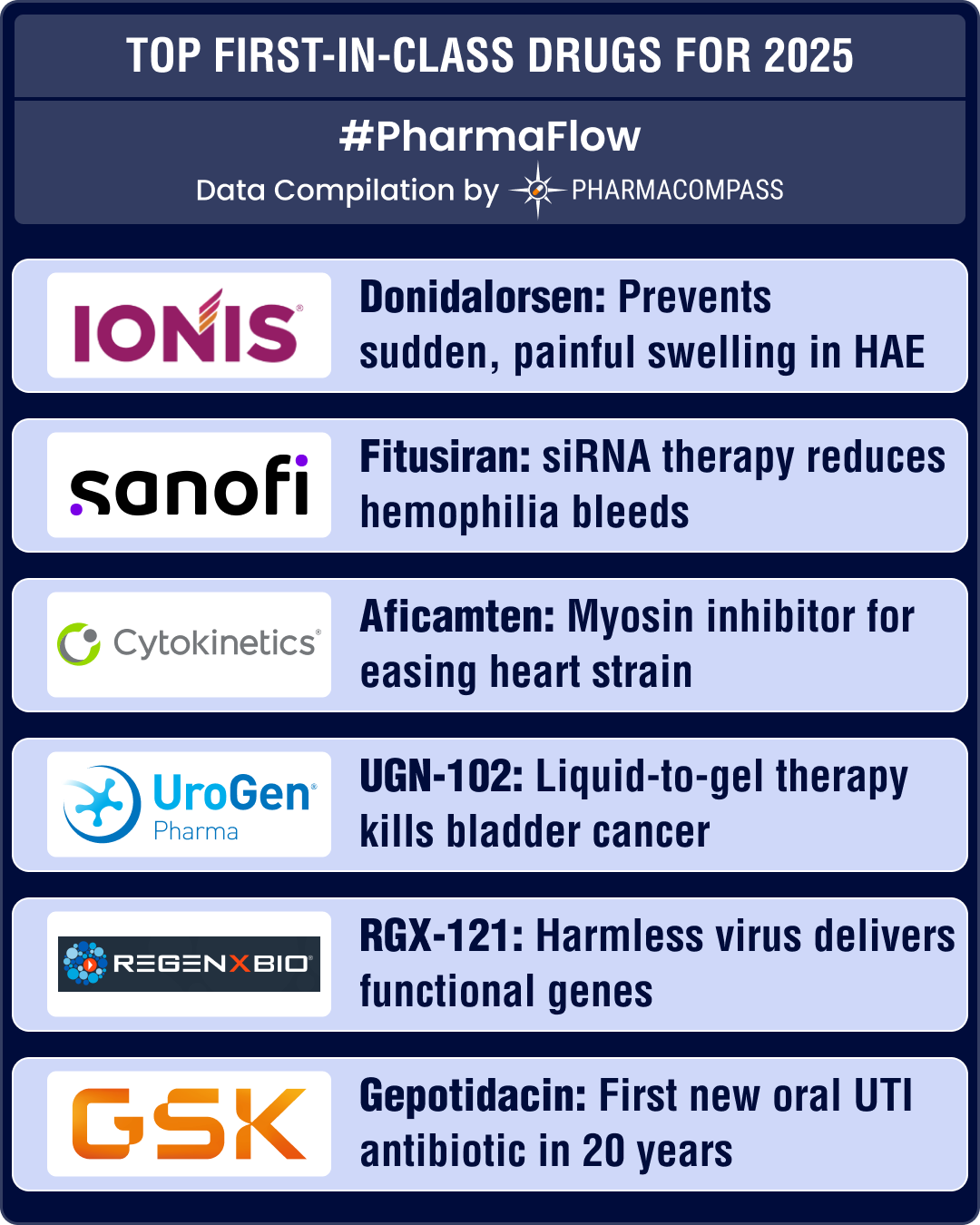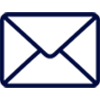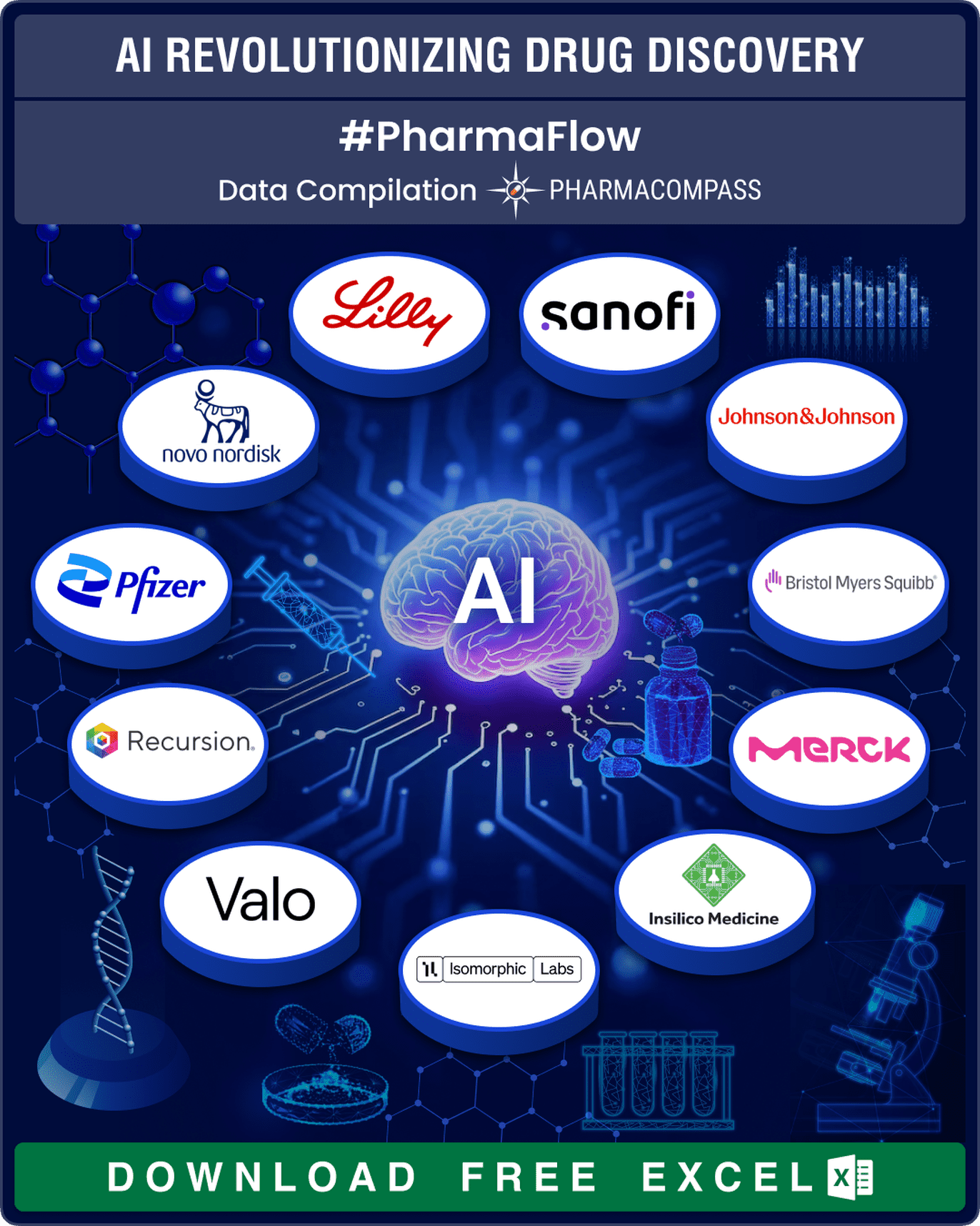 AbbVie Inc
AbbVie Inc
03 Mar 2025
// PRESS RELEASE
20 Feb 2025
// GLOBENEWSWIRE
14 Feb 2025
// FIERCE PHARMA
Latest Content by PharmaCompass

About
Industry Trade Show
Attending
17-20 March, 2025
American Biomanufactur...American Biomanufacturing Summit
Industry Trade Show
Attending
15-16 April, 2025
Industry Trade Show
Attending
04-08 May, 2025
CONTACT DETAILS
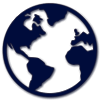


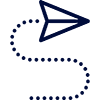
Events
Webinars & Exhibitions
Industry Trade Show
Attending
17-20 March, 2025
American Biomanufactur...American Biomanufacturing Summit
Industry Trade Show
Attending
15-16 April, 2025
Industry Trade Show
Attending
04-08 May, 2025
CORPORATE CONTENT #SupplierSpotlight
https://www.pharmacompass.com/radio-compass-blog/top-first-in-class-drug-candidates-of-2025-ionis-donidalorsen-sanofi-s-fitusiran-cytokinetics-aficamten-await-fda-approval
https://www.pharmacompass.com/radio-compass-blog/fda-okays-50-new-drugs-in-2024-bms-cobenfy-lilly-s-kisunla-lead-pack-of-breakthrough-therapies
https://www.pharmacompass.com/radio-compass-blog/fda-s-landmark-approvals-of-bms-schizo-med-madrigal-s-mash-drug-us-16-5-bn-catalent-buyout-make-it-to-top-10-news-of-2024
https://www.pharmacompass.com/radio-compass-blog/chinese-fda-registered-generic-facilities-gain-steam-india-maintains-lead-with-396-facilities
https://www.pharmacompass.com/radio-compass-blog/novartis-gsk-sanofi-bms-shell-out-over-us-10-bn-in-dealmaking-as-mid-size-deals-take-centerstage-in-2024
https://www.pharmacompass.com/radio-compass-blog/fda-s-june-2024-list-of-off-patent-off-exclusivity-drugs-sees-rise-in-cancer-hiv-treatments
https://www.pharmacompass.com/radio-compass-blog/fda-approves-record-eight-biosimilars-in-h1-2024-okays-first-interchangeable-biosimilars-for-eylea
https://www.pharmacompass.com/radio-compass-blog/top-pharma-companies-drugs-in-2023-merck-s-keytruda-emerges-as-top-selling-drug-novo-lilly-sales-skyrocket-due-to-glp-1-drugs
https://www.pharmacompass.com/radio-compass-blog/fda-approvals-rise-49-in-2023-crispr-s-gene-editing-therapy-sees-light-of-day
https://www.pharmacompass.com/radio-compass-blog/pfizer-s-buyout-of-seagen-drugmakers-suing-us-govt-obesity-drugs-make-it-to-top-10-phispers-of-2023
https://www.pharmacompass.com/radio-compass-blog/fda-reports-62-5-growth-in-new-drug-approvals-in-h1-2023-ema-health-canada-see-drop

03 Mar 2025
// PRESS RELEASE
https://news.abbvie.com/2025-03-03-AbbVie-and-Gubra-Announce-License-Agreement-to-Develop-an-Amylin-Analog-for-the-Treatment-of-Obesity

20 Feb 2025
// GLOBENEWSWIRE
https://www.globenewswire.com/news-release/2025/02/20/3029562/0/en/EPKINLY-epcoritamab-Approved-by-Japan-Ministry-of-Health-Labour-and-Welfare-for-Additional-Indication-as-a-Treatment-for-Relapsed-or-Refractory-Follicular-Lymphoma.html

14 Feb 2025
// FIERCE PHARMA
https://www.fiercepharma.com/marketing/ucbs-bimzelx-outpacing-abbvies-rinvoq-skyrizi-awareness-early-launch-survey

13 Feb 2025
// PRESS RELEASE
https://news.abbvie.com/2025-02-12-AbbVie-and-Xilio-Therapeutics-Announce-Collaboration-and-Option-Agreement-to-Develop-Novel-Tumor-Activated-Immunotherapies

13 Feb 2025
// PR NEWSWIRE
https://www.prnewswire.com/news-releases/abbvie-declares-quarterly-dividend-302376276.html

08 Feb 2025
// REUTERS
https://www.reuters.com/business/healthcare-pharmaceuticals/us-fda-approves-abbvies-treatment-intra-abdominal-infections-2025-02-07/
 Boost your online visibility by uploading your products, APIs, FDFs, intermediates, excipients, and services for free on PharmaCompass.
Rank higher among suppliers and expand your reach across the internet efficiently and cost-effectively.
Boost your online visibility by uploading your products, APIs, FDFs, intermediates, excipients, and services for free on PharmaCompass.
Rank higher among suppliers and expand your reach across the internet efficiently and cost-effectively.
Details:
Under the licensing agreement, Abbvie will hold the exclusive rights to develop GUBamy (GUB014295), a potential best-in-class, long-acting amylin analog for the treatment of obesity.
Lead Product(s): GUB014295
Therapeutic Area: Nutrition and Weight Loss Brand Name: GUBamy
Study Phase: Phase IProduct Type: Peptide
Recipient: Gubra
Deal Size: $2,225.0 million Upfront Cash: $350.0 million
Deal Type: Licensing Agreement March 03, 2025
 Boost your online visibility by uploading your products, APIs, FDFs, intermediates, excipients, and services for free on PharmaCompass.
Rank higher among suppliers and expand your reach across the internet efficiently and cost-effectively.
Boost your online visibility by uploading your products, APIs, FDFs, intermediates, excipients, and services for free on PharmaCompass.
Rank higher among suppliers and expand your reach across the internet efficiently and cost-effectively.
Lead Product(s) : GUB014295
Therapeutic Area : Nutrition and Weight Loss
Highest Development Status : Phase I
Recipient : Gubra
Deal Size : $2,225.0 million
Deal Type : Licensing Agreement
AbbVie, Gubra Sign License Deal to Develop Amylin Analog for Obesity
Details : Under the licensing agreement, Abbvie will hold the exclusive rights to develop GUBamy (GUB014295), a potential best-in-class, long-acting amylin analog for the treatment of obesity.
Product Name : GUBamy
Product Type : Peptide
Upfront Cash : $350.0 million
March 03, 2025
 Boost your online visibility by uploading your products, APIs, FDFs, intermediates, excipients, and services for free on PharmaCompass.
Rank higher among suppliers and expand your reach across the internet efficiently and cost-effectively.
Boost your online visibility by uploading your products, APIs, FDFs, intermediates, excipients, and services for free on PharmaCompass.
Rank higher among suppliers and expand your reach across the internet efficiently and cost-effectively.
Details:
Rinvoq (upadacitinib) is a FDA approved selective JAK inhibitor that is being investigated in adult patients with giant cell arteritis in a Phase 3 clinical trial.
Lead Product(s): Upadacitinib,Corticosteroid
Therapeutic Area: Immunology Brand Name: Rinvoq
Study Phase: Phase IIIProduct Type: Other Small Molecule
Sponsor: Inapplicable
Deal Size: Inapplicable Upfront Cash: Inapplicable
Deal Type: Inapplicable February 28, 2025
 Boost your online visibility by uploading your products, APIs, FDFs, intermediates, excipients, and services for free on PharmaCompass.
Rank higher among suppliers and expand your reach across the internet efficiently and cost-effectively.
Boost your online visibility by uploading your products, APIs, FDFs, intermediates, excipients, and services for free on PharmaCompass.
Rank higher among suppliers and expand your reach across the internet efficiently and cost-effectively.
Lead Product(s) : Upadacitinib,Corticosteroid
Therapeutic Area : Immunology
Highest Development Status : Phase III
Partner/Sponsor/Collaborator : Inapplicable
Deal Size : Inapplicable
Deal Type : Inapplicable
AbbVie gets Positive CHMP Opinion for RINVOQ® in Giant Cell Arteritis Treatment
Details : Rinvoq (upadacitinib) is a FDA approved selective JAK inhibitor that is being investigated in adult patients with giant cell arteritis in a Phase 3 clinical trial.
Product Name : Rinvoq
Product Type : Other Small Molecule
Upfront Cash : Inapplicable
February 28, 2025
 Boost your online visibility by uploading your products, APIs, FDFs, intermediates, excipients, and services for free on PharmaCompass.
Rank higher among suppliers and expand your reach across the internet efficiently and cost-effectively.
Boost your online visibility by uploading your products, APIs, FDFs, intermediates, excipients, and services for free on PharmaCompass.
Rank higher among suppliers and expand your reach across the internet efficiently and cost-effectively.
Details:
The collaboration will combine AbbVie's oncology expertise and Xilio's proprietary tumor-activation technology to develop novel immunotherapies, including masked T-cell engagers.
Lead Product(s): Undisclosed
Therapeutic Area: Oncology Brand Name: Undisclosed
Study Phase: Discovery PlatformProduct Type: Antibody
Recipient: Xilio Therapeutics
Deal Size: $2,152.0 million Upfront Cash: $52.0 million
Deal Type: Collaboration February 12, 2025
 Boost your online visibility by uploading your products, APIs, FDFs, intermediates, excipients, and services for free on PharmaCompass.
Rank higher among suppliers and expand your reach across the internet efficiently and cost-effectively.
Boost your online visibility by uploading your products, APIs, FDFs, intermediates, excipients, and services for free on PharmaCompass.
Rank higher among suppliers and expand your reach across the internet efficiently and cost-effectively.
Lead Product(s) : Undisclosed
Therapeutic Area : Oncology
Highest Development Status : Discovery Platform
Recipient : Xilio Therapeutics
Deal Size : $2,152.0 million
Deal Type : Collaboration
AbbVie, Xilio Partner to Develop Tumor-Activated Immunotherapies
Details : The collaboration will combine AbbVie's oncology expertise and Xilio's proprietary tumor-activation technology to develop novel immunotherapies, including masked T-cell engagers.
Product Name : Undisclosed
Product Type : Antibody
Upfront Cash : $52.0 million
February 12, 2025
 Boost your online visibility by uploading your products, APIs, FDFs, intermediates, excipients, and services for free on PharmaCompass.
Rank higher among suppliers and expand your reach across the internet efficiently and cost-effectively.
Boost your online visibility by uploading your products, APIs, FDFs, intermediates, excipients, and services for free on PharmaCompass.
Rank higher among suppliers and expand your reach across the internet efficiently and cost-effectively.
Details:
Emblaveo (aztreonam-avibactam), a beta-lactamase inhibitor, has been FDA approved for the treatment of adult patients with complicated intra-abdominal infections in patients 18 years and older.
Lead Product(s): Aztreonam,Avibactam,Metronidazole
Therapeutic Area: Infections and Infectious Diseases Brand Name: Emblaveo
Study Phase: Approved FDFProduct Type: Antibiotic
Sponsor: Pfizer Inc
Deal Size: Inapplicable Upfront Cash: Inapplicable
Deal Type: Inapplicable February 07, 2025
 Boost your online visibility by uploading your products, APIs, FDFs, intermediates, excipients, and services for free on PharmaCompass.
Rank higher among suppliers and expand your reach across the internet efficiently and cost-effectively.
Boost your online visibility by uploading your products, APIs, FDFs, intermediates, excipients, and services for free on PharmaCompass.
Rank higher among suppliers and expand your reach across the internet efficiently and cost-effectively.
Lead Product(s) : Aztreonam,Avibactam,Metronidazole
Therapeutic Area : Infections and Infectious Diseases
Highest Development Status : Approved FDF
Partner/Sponsor/Collaborator : Pfizer Inc
Deal Size : Inapplicable
Deal Type : Inapplicable
U.S. FDA Approves EMBLAVEO™ for Complicated Intra-Abdominal Infections
Details : Emblaveo (aztreonam-avibactam), a beta-lactamase inhibitor, has been FDA approved for the treatment of adult patients with complicated intra-abdominal infections in patients 18 years and older.
Product Name : Emblaveo
Product Type : Antibiotic
Upfront Cash : Inapplicable
February 07, 2025
 Boost your online visibility by uploading your products, APIs, FDFs, intermediates, excipients, and services for free on PharmaCompass.
Rank higher among suppliers and expand your reach across the internet efficiently and cost-effectively.
Boost your online visibility by uploading your products, APIs, FDFs, intermediates, excipients, and services for free on PharmaCompass.
Rank higher among suppliers and expand your reach across the internet efficiently and cost-effectively.
Details:
AbbVie acquires Nimble, including its lead asset, an investigational oral peptide IL23R inhibitor in preclinical development for the treatment of psoriasis.
Lead Product(s): Undisclosed
Therapeutic Area: Dermatology Brand Name: Undisclosed
Study Phase: PreclinicalProduct Type: Peptide
Recipient: Nimble Therapeutics
Deal Size: $200.0 million Upfront Cash: $200.0 million
Deal Type: Acquisition January 23, 2025
 Boost your online visibility by uploading your products, APIs, FDFs, intermediates, excipients, and services for free on PharmaCompass.
Rank higher among suppliers and expand your reach across the internet efficiently and cost-effectively.
Boost your online visibility by uploading your products, APIs, FDFs, intermediates, excipients, and services for free on PharmaCompass.
Rank higher among suppliers and expand your reach across the internet efficiently and cost-effectively.
Lead Product(s) : Undisclosed
Therapeutic Area : Dermatology
Highest Development Status : Preclinical
Recipient : Nimble Therapeutics
Deal Size : $200.0 million
Deal Type : Acquisition
AbbVie Completes Acquisition of Nimble Therapeutics
Details : AbbVie acquires Nimble, including its lead asset, an investigational oral peptide IL23R inhibitor in preclinical development for the treatment of psoriasis.
Product Name : Undisclosed
Product Type : Peptide
Upfront Cash : $200.0 million
January 23, 2025
 Boost your online visibility by uploading your products, APIs, FDFs, intermediates, excipients, and services for free on PharmaCompass.
Rank higher among suppliers and expand your reach across the internet efficiently and cost-effectively.
Boost your online visibility by uploading your products, APIs, FDFs, intermediates, excipients, and services for free on PharmaCompass.
Rank higher among suppliers and expand your reach across the internet efficiently and cost-effectively.
Details:
The collaboration leverages AbbVie's oncology and immunology drug development expertise and Neomorph's leading molecular glue discovery platform.
Lead Product(s): Undisclosed
Therapeutic Area: Oncology Brand Name: Undisclosed
Study Phase: Discovery PlatformProduct Type: Other Small Molecule
Recipient: Neomorph
Deal Size: $1,640.0 million Upfront Cash: Undisclosed
Deal Type: Collaboration January 23, 2025
 Boost your online visibility by uploading your products, APIs, FDFs, intermediates, excipients, and services for free on PharmaCompass.
Rank higher among suppliers and expand your reach across the internet efficiently and cost-effectively.
Boost your online visibility by uploading your products, APIs, FDFs, intermediates, excipients, and services for free on PharmaCompass.
Rank higher among suppliers and expand your reach across the internet efficiently and cost-effectively.
Lead Product(s) : Undisclosed
Therapeutic Area : Oncology
Highest Development Status : Discovery Platform
Recipient : Neomorph
Deal Size : $1,640.0 million
Deal Type : Collaboration
AbbVie Crafts $1.6B Deal with Molecular Glue Biotech Neomorph
Details : The collaboration leverages AbbVie's oncology and immunology drug development expertise and Neomorph's leading molecular glue discovery platform.
Product Name : Undisclosed
Product Type : Other Small Molecule
Upfront Cash : Undisclosed
January 23, 2025
 Boost your online visibility by uploading your products, APIs, FDFs, intermediates, excipients, and services for free on PharmaCompass.
Rank higher among suppliers and expand your reach across the internet efficiently and cost-effectively.
Boost your online visibility by uploading your products, APIs, FDFs, intermediates, excipients, and services for free on PharmaCompass.
Rank higher among suppliers and expand your reach across the internet efficiently and cost-effectively.
Details:
Simcere has option to license agreement with Abbvie to develop SIM0500, an investigational new drug candidate. It is being evaluated in patients with relapsed or refractory multiple myeloma.
Lead Product(s): SIM0500
Therapeutic Area: Oncology Brand Name: SIM0500
Study Phase: Phase IProduct Type: Cell and Gene therapy
Recipient: Jiangsu Simcere Pharmaceutical
Deal Size: $1,055.0 million Upfront Cash: Undisclosed
Deal Type: Licensing Agreement January 13, 2025
 Boost your online visibility by uploading your products, APIs, FDFs, intermediates, excipients, and services for free on PharmaCompass.
Rank higher among suppliers and expand your reach across the internet efficiently and cost-effectively.
Boost your online visibility by uploading your products, APIs, FDFs, intermediates, excipients, and services for free on PharmaCompass.
Rank higher among suppliers and expand your reach across the internet efficiently and cost-effectively.
Lead Product(s) : SIM0500
Therapeutic Area : Oncology
Highest Development Status : Phase I
Recipient : Jiangsu Simcere Pharmaceutical
Deal Size : $1,055.0 million
Deal Type : Licensing Agreement
AbbVie Pens $1B deal for Simcere’s Phase 1 T-Cell Engager
Details : Simcere has option to license agreement with Abbvie to develop SIM0500, an investigational new drug candidate. It is being evaluated in patients with relapsed or refractory multiple myeloma.
Product Name : SIM0500
Product Type : Cell and Gene therapy
Upfront Cash : Undisclosed
January 13, 2025
 Boost your online visibility by uploading your products, APIs, FDFs, intermediates, excipients, and services for free on PharmaCompass.
Rank higher among suppliers and expand your reach across the internet efficiently and cost-effectively.
Boost your online visibility by uploading your products, APIs, FDFs, intermediates, excipients, and services for free on PharmaCompass.
Rank higher among suppliers and expand your reach across the internet efficiently and cost-effectively.
Details:
Under the terms of the agreement, AbCellera will lead discovery activities and AbbVie has the right to develop and commercialize therapeutic antibodies resulting from the expanded collaboration.
Lead Product(s): Undisclosed
Therapeutic Area: Oncology Brand Name: Undisclosed
Study Phase: Discovery PlatformProduct Type: Antibody
Recipient: AbCellera
Deal Size: Undisclosed Upfront Cash: Undisclosed
Deal Type: Expanded Collaboration January 13, 2025
 Boost your online visibility by uploading your products, APIs, FDFs, intermediates, excipients, and services for free on PharmaCompass.
Rank higher among suppliers and expand your reach across the internet efficiently and cost-effectively.
Boost your online visibility by uploading your products, APIs, FDFs, intermediates, excipients, and services for free on PharmaCompass.
Rank higher among suppliers and expand your reach across the internet efficiently and cost-effectively.
Lead Product(s) : Undisclosed
Therapeutic Area : Oncology
Highest Development Status : Discovery Platform
Recipient : AbCellera
Deal Size : Undisclosed
Deal Type : Expanded Collaboration
AbCellera Expands Collaboration with AbbVie to Develop Novel T-Cell Engagers for Oncology
Details : Under the terms of the agreement, AbCellera will lead discovery activities and AbbVie has the right to develop and commercialize therapeutic antibodies resulting from the expanded collaboration.
Product Name : Undisclosed
Product Type : Antibody
Upfront Cash : Undisclosed
January 13, 2025
 Boost your online visibility by uploading your products, APIs, FDFs, intermediates, excipients, and services for free on PharmaCompass.
Rank higher among suppliers and expand your reach across the internet efficiently and cost-effectively.
Boost your online visibility by uploading your products, APIs, FDFs, intermediates, excipients, and services for free on PharmaCompass.
Rank higher among suppliers and expand your reach across the internet efficiently and cost-effectively.
Details:
Through its collaboration with Capsida, AbbVie leverages the platform to identify and develop clinically translatable capsids, combined with innovative therapeutics, to address three CNS diseases.
Lead Product(s): Undisclosed
Therapeutic Area: Neurology Brand Name: Undisclosed
Study Phase: PreclinicalProduct Type: Cell and Gene therapy
Recipient: Capsida
Deal Size: $620.0 million Upfront Cash: $90.0 million
Deal Type: Collaboration January 07, 2025
 Boost your online visibility by uploading your products, APIs, FDFs, intermediates, excipients, and services for free on PharmaCompass.
Rank higher among suppliers and expand your reach across the internet efficiently and cost-effectively.
Boost your online visibility by uploading your products, APIs, FDFs, intermediates, excipients, and services for free on PharmaCompass.
Rank higher among suppliers and expand your reach across the internet efficiently and cost-effectively.
Lead Product(s) : Undisclosed
Therapeutic Area : Neurology
Highest Development Status : Preclinical
Recipient : Capsida
Deal Size : $620.0 million
Deal Type : Collaboration
AbbVie Exercises first $40 Million Option to Advance Capsida-Partnered Cns Gene Therapy
Details : Through its collaboration with Capsida, AbbVie leverages the platform to identify and develop clinically translatable capsids, combined with innovative therapeutics, to address three CNS diseases.
Product Name : Undisclosed
Product Type : Cell and Gene therapy
Upfront Cash : $90.0 million
January 07, 2025
 Boost your online visibility by uploading your products, APIs, FDFs, intermediates, excipients, and services for free on PharmaCompass.
Rank higher among suppliers and expand your reach across the internet efficiently and cost-effectively.
Boost your online visibility by uploading your products, APIs, FDFs, intermediates, excipients, and services for free on PharmaCompass.
Rank higher among suppliers and expand your reach across the internet efficiently and cost-effectively.
Details:
AbbVie will acquire Nimble, including its lead asset, an investigational oral peptide IL23R inhibitor in preclinical development for the treatment of psoriasis.
Lead Product(s): Peptide
Therapeutic Area: Dermatology Brand Name: Undisclosed
Study Phase: PreclinicalProduct Type: Peptide
Recipient: Nimble Therapeutics
Deal Size: $200.0 million Upfront Cash: $200.0 million
Deal Type: Acquisition December 13, 2024
 Boost your online visibility by uploading your products, APIs, FDFs, intermediates, excipients, and services for free on PharmaCompass.
Rank higher among suppliers and expand your reach across the internet efficiently and cost-effectively.
Boost your online visibility by uploading your products, APIs, FDFs, intermediates, excipients, and services for free on PharmaCompass.
Rank higher among suppliers and expand your reach across the internet efficiently and cost-effectively.
Lead Product(s) : Peptide
Therapeutic Area : Dermatology
Highest Development Status : Preclinical
Recipient : Nimble Therapeutics
Deal Size : $200.0 million
Deal Type : Acquisition
AbbVie Buys Roche Spinout Nimble Therapeutics for $200M
Details : AbbVie will acquire Nimble, including its lead asset, an investigational oral peptide IL23R inhibitor in preclinical development for the treatment of psoriasis.
Product Name : Undisclosed
Product Type : Peptide
Upfront Cash : $200.0 million
December 13, 2024
 FULL SCREEN VIEW Click here to open all results in a new tab [this preview display 10 results]
FULL SCREEN VIEW Click here to open all results in a new tab [this preview display 10 results] Boost your online visibility by uploading your products, APIs, FDFs, intermediates, excipients, and services for free on PharmaCompass.
Rank higher among suppliers and expand your reach across the internet efficiently and cost-effectively.
Boost your online visibility by uploading your products, APIs, FDFs, intermediates, excipients, and services for free on PharmaCompass.
Rank higher among suppliers and expand your reach across the internet efficiently and cost-effectively.
RLD : No
TE Code :
ACETAMINOPHEN; HYDROCODONE BITARTRATE
Dosage Form : TABLET; ORAL
Proprietary Name : VICODIN HP
Dosage Strength : 660MG;10MG
Approval Date : 1996-09-23
Application Number : 40117
RX/OTC/DISCN : DISCN
RLD : No
TE Code :
 Boost your online visibility by uploading your products, APIs, FDFs, intermediates, excipients, and services for free on PharmaCompass.
Rank higher among suppliers and expand your reach across the internet efficiently and cost-effectively.
Boost your online visibility by uploading your products, APIs, FDFs, intermediates, excipients, and services for free on PharmaCompass.
Rank higher among suppliers and expand your reach across the internet efficiently and cost-effectively.
RLD : No
TE Code :
ACETAMINOPHEN; HYDROCODONE BITARTRATE
Dosage Form : TABLET; ORAL
Proprietary Name : VICODIN
Dosage Strength : 500MG;5MG
Approval Date : 1983-01-07
Application Number : 88058
RX/OTC/DISCN : DISCN
RLD : No
TE Code :
 Boost your online visibility by uploading your products, APIs, FDFs, intermediates, excipients, and services for free on PharmaCompass.
Rank higher among suppliers and expand your reach across the internet efficiently and cost-effectively.
Boost your online visibility by uploading your products, APIs, FDFs, intermediates, excipients, and services for free on PharmaCompass.
Rank higher among suppliers and expand your reach across the internet efficiently and cost-effectively.
RLD : No
TE Code :
ACETAMINOPHEN; HYDROCODONE BITARTRATE
Dosage Form : TABLET; ORAL
Proprietary Name : VICODIN ES
Dosage Strength : 750MG;7.5MG
Approval Date : 1988-12-09
Application Number : 89736
RX/OTC/DISCN : DISCN
RLD : No
TE Code :
 Boost your online visibility by uploading your products, APIs, FDFs, intermediates, excipients, and services for free on PharmaCompass.
Rank higher among suppliers and expand your reach across the internet efficiently and cost-effectively.
Boost your online visibility by uploading your products, APIs, FDFs, intermediates, excipients, and services for free on PharmaCompass.
Rank higher among suppliers and expand your reach across the internet efficiently and cost-effectively.
RLD : No
TE Code :
Dosage Form : INJECTABLE; INJECTION
Proprietary Name : ACYCLOVIR
Dosage Strength : EQ 50MG BASE/ML
Approval Date : 1999-07-26
Application Number : 75114
RX/OTC/DISCN : DISCN
RLD : No
TE Code :
 Boost your online visibility by uploading your products, APIs, FDFs, intermediates, excipients, and services for free on PharmaCompass.
Rank higher among suppliers and expand your reach across the internet efficiently and cost-effectively.
Boost your online visibility by uploading your products, APIs, FDFs, intermediates, excipients, and services for free on PharmaCompass.
Rank higher among suppliers and expand your reach across the internet efficiently and cost-effectively.
RLD :
TE Code :
Dosage Form : SYRINGE
Proprietary Name : HUMIRA
Dosage Strength : 40MG/0.8ML
Approval Date :
Application Number : 125057
RX/OTC/DISCN :
RLD :
TE Code :
 Boost your online visibility by uploading your products, APIs, FDFs, intermediates, excipients, and services for free on PharmaCompass.
Rank higher among suppliers and expand your reach across the internet efficiently and cost-effectively.
Boost your online visibility by uploading your products, APIs, FDFs, intermediates, excipients, and services for free on PharmaCompass.
Rank higher among suppliers and expand your reach across the internet efficiently and cost-effectively.
RLD :
TE Code :
Dosage Form : VIAL
Proprietary Name : HUMIRA
Dosage Strength : 40MG/0.8ML
Approval Date :
Application Number : 125057
RX/OTC/DISCN :
RLD :
TE Code :
 Boost your online visibility by uploading your products, APIs, FDFs, intermediates, excipients, and services for free on PharmaCompass.
Rank higher among suppliers and expand your reach across the internet efficiently and cost-effectively.
Boost your online visibility by uploading your products, APIs, FDFs, intermediates, excipients, and services for free on PharmaCompass.
Rank higher among suppliers and expand your reach across the internet efficiently and cost-effectively.
RLD : Yes
TE Code :
Dosage Form : SOLUTION/DROPS; OPHTHALMIC
Proprietary Name : LASTACAFT
Dosage Strength : 0.25%
Approval Date : 2010-07-28
Application Number : 22134
RX/OTC/DISCN : OTC
RLD : Yes
TE Code :
 Boost your online visibility by uploading your products, APIs, FDFs, intermediates, excipients, and services for free on PharmaCompass.
Rank higher among suppliers and expand your reach across the internet efficiently and cost-effectively.
Boost your online visibility by uploading your products, APIs, FDFs, intermediates, excipients, and services for free on PharmaCompass.
Rank higher among suppliers and expand your reach across the internet efficiently and cost-effectively.
RLD : Yes
TE Code :
Dosage Form : TABLET; ORAL
Proprietary Name : QULIPTA
Dosage Strength : 10MG
Approval Date : 2021-09-28
Application Number : 215206
RX/OTC/DISCN : RX
RLD : Yes
TE Code :
 Boost your online visibility by uploading your products, APIs, FDFs, intermediates, excipients, and services for free on PharmaCompass.
Rank higher among suppliers and expand your reach across the internet efficiently and cost-effectively.
Boost your online visibility by uploading your products, APIs, FDFs, intermediates, excipients, and services for free on PharmaCompass.
Rank higher among suppliers and expand your reach across the internet efficiently and cost-effectively.
RLD : Yes
TE Code :
Dosage Form : TABLET; ORAL
Proprietary Name : QULIPTA
Dosage Strength : 30MG
Approval Date : 2021-09-28
Application Number : 215206
RX/OTC/DISCN : RX
RLD : Yes
TE Code :
 Boost your online visibility by uploading your products, APIs, FDFs, intermediates, excipients, and services for free on PharmaCompass.
Rank higher among suppliers and expand your reach across the internet efficiently and cost-effectively.
Boost your online visibility by uploading your products, APIs, FDFs, intermediates, excipients, and services for free on PharmaCompass.
Rank higher among suppliers and expand your reach across the internet efficiently and cost-effectively.
RLD : Yes
TE Code :
Dosage Form : TABLET; ORAL
Proprietary Name : QULIPTA
Dosage Strength : 60MG
Approval Date : 2021-09-28
Application Number : 215206
RX/OTC/DISCN : RX
RLD : Yes
TE Code :
Inspections and registrations
ABOUT THIS PAGE
AbbVie Inc is a supplier offers 12 products (APIs, Excipients or Intermediates).
Find a price of Cyclosporine bulk with DMF, CEP offered by AbbVie Inc
Find a price of Erythromycin bulk with DMF, CEP offered by AbbVie Inc
Find a price of Biperiden Hydrochloride bulk with CEP offered by AbbVie Inc
Find a price of Butorphanol Tartrate bulk with DMF offered by AbbVie Inc
Find a price of Erythromycin Ethyl Succinate bulk with DMF offered by AbbVie Inc
Find a price of Erythromycin Stearate bulk with DMF offered by AbbVie Inc
Find a price of Isoflurane bulk with CEP offered by AbbVie Inc
Find a price of Paricalcitol bulk with DMF offered by AbbVie Inc
Find a price of Ritonavir bulk with CEP offered by AbbVie Inc
Find a price of Divalproex Sodium bulk offered by AbbVie Inc
Find a price of Enflurane bulk offered by AbbVie Inc
Find a price of Erythromycin Thiocyanate bulk offered by AbbVie Inc


